Egress door inspections are getting more attention these days (read tomorrow’s post to learn why), so I have updated this Decoded article to include current code requirements.
This post was published in Doors & Hardware

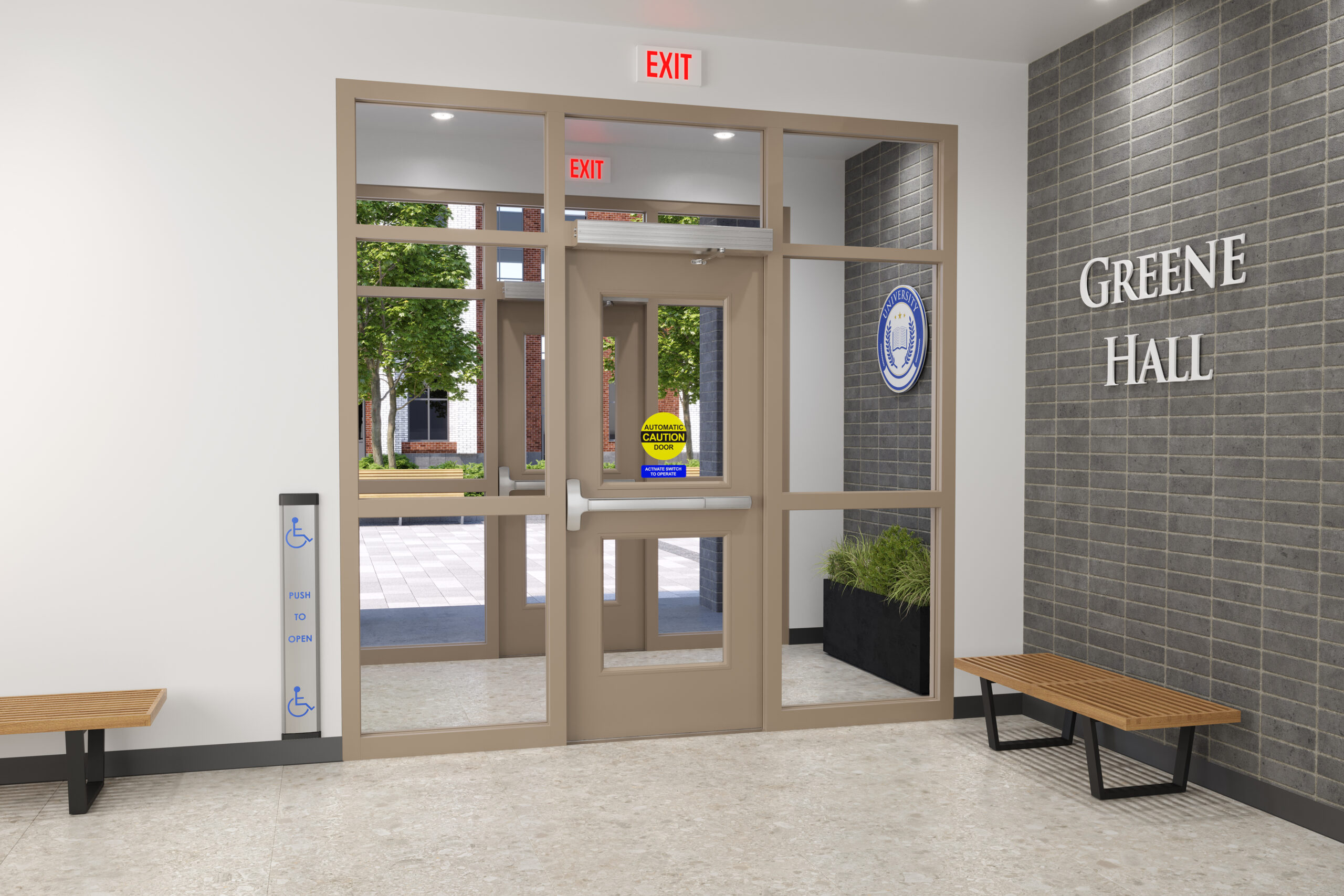 In recent years, there has been a lot of publicity about the annual inspections required for fire door assemblies, but we must also be familiar with the inspection and testing requirements for egress doors. These requirements were added to the 2009 edition of NFPA 101 – The Life Safety Code, and are also found in subsequent editions of the code.
In recent years, there has been a lot of publicity about the annual inspections required for fire door assemblies, but we must also be familiar with the inspection and testing requirements for egress doors. These requirements were added to the 2009 edition of NFPA 101 – The Life Safety Code, and are also found in subsequent editions of the code.
In the 2024 edition of NFPA 101, these inspections are covered in Section 7.2.1.14 – Inspection of Door Openings. The same section title was used in previous editions, but the section numbers may vary. Inspections of the specified egress doors are required not less than annually by NFPA 101 if so stated in chapters 11-43 – the occupancy chapters. The occupancy chapters in this edition that refer to Section 7.2.1.14 are:
- Assembly (12.7.1.3, 13.7.1.3)
- Educational (14.7.3.3, 15.7.3.3)
- Day-Care (16.7.3.4, 17.7.3.4)
- Residential Board and Care (32.7.7, 33.7.7)
- Hotels and Dormitories (28.7.7, 29.7.7)
- Apartment Buildings (30.7.3, 31.7.3)
- Mercantile (36.7.7, 37.7.7)
- Business (38.7.7, 39.7.7)
- Industrial (40.7.3)
- Storage (42.9.3)
Section 7.2.1.14 also addresses the inspection of fire doors (performed in accordance with NFPA 80) and smoke doors (performed in accordance with NFPA 105), for fire doors and smoke doors in all occupancy types.
The egress door inspection and testing requirements do not apply to every door in a facility, but the following doors in the referenced occupancy types must be inspected annually:
- Door leaves equipped with panic hardware or fire exit hardware in accordance with Section 7.2.1.7: Panic hardware is required by NFPA 101 for doors in Assembly, Educational, and Day Care occupancies serving a calculated occupant load of 100 people or more (note that the occupant load threshold in the I-Codes is 50 people or more). According to NFPA 101, Annex A, the inspection requirements should also apply to other doors that are equipped with panic hardware or fire exit hardware where it is not specifically required by the code.
- Door assemblies in exit enclosures: These are typically doors serving stairwells and exit passageways. Because most interior exit enclosure doors are required to be fire door assemblies, these doors are typically subject to both fire door inspections and egress door inspections.
- Electrically controlled egress doors: The common application for this type of door is an electromagnetic lock that is released by door-mounted hardware such as panic hardware with an integral request-to-exit switch. The section of the Life Safety Code that addresses these doors is called Door Hardware Release of Electrically Locked Egress Door Assemblies.
- Door assemblies with special locking arrangements subject to Section 7.2.1.6: Special locking arrangements include delayed-egress electrical locking systems, sensor-release of electrical locking systems, and elevator lobby exit access door assemblies.
- Note: For Residential Board and Care occupancies, the inspection requirements apply to doors that are required to swing in the direction of egress – typically doors serving areas with an occupant load of 50 or more, and doors used in exit enclosures.
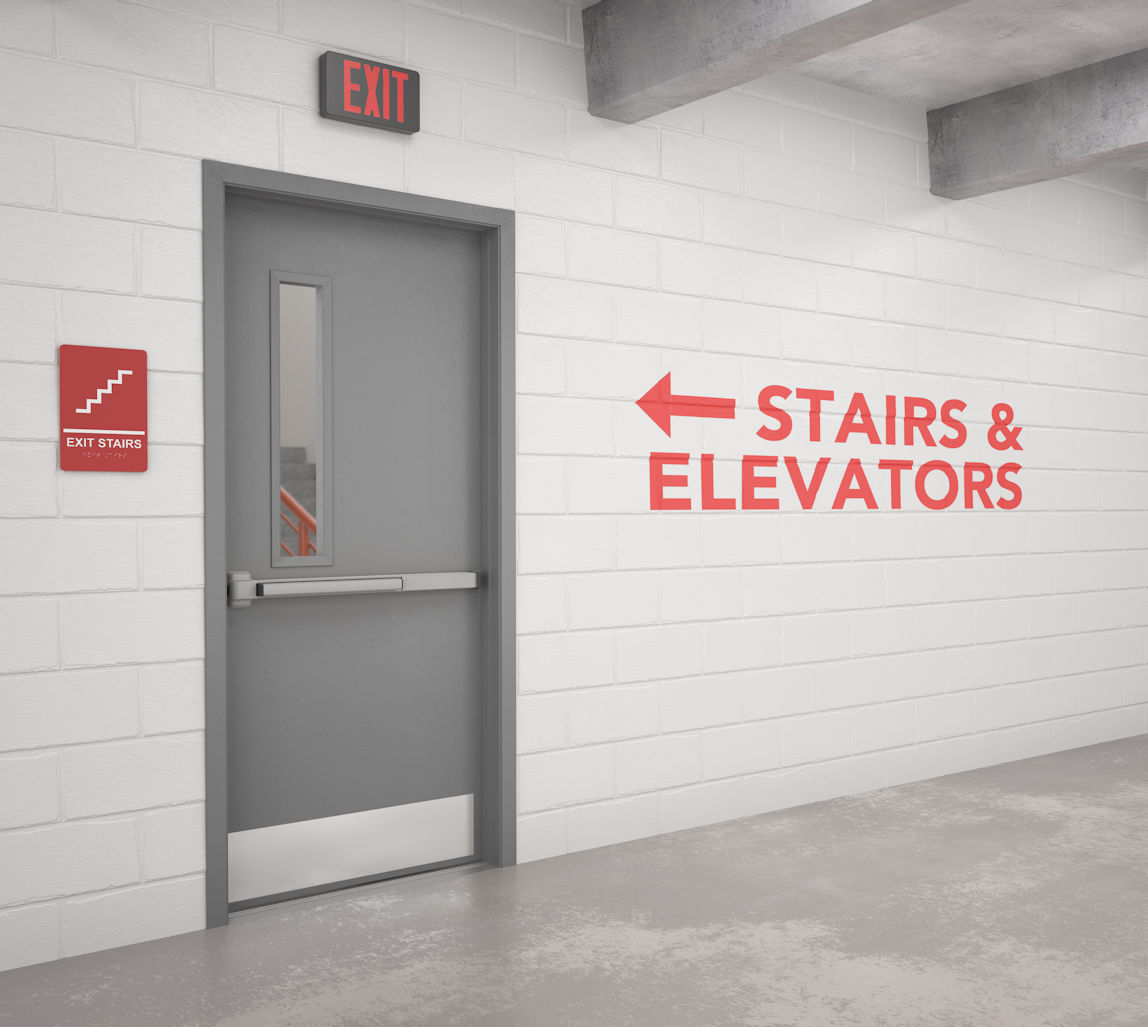 Inspecting doors in these locations helps to ensure that the openings used most frequently and that are more prone to wear and tear are operating properly. Similar to the NFPA 80 requirements for fire door inspections, door assemblies must be visually inspected from both sides of the opening to assess the condition. Functional testing must be performed by qualified individuals who can demonstrate knowledge and understanding of the type of doors subject to testing.
Inspecting doors in these locations helps to ensure that the openings used most frequently and that are more prone to wear and tear are operating properly. Similar to the NFPA 80 requirements for fire door inspections, door assemblies must be visually inspected from both sides of the opening to assess the condition. Functional testing must be performed by qualified individuals who can demonstrate knowledge and understanding of the type of doors subject to testing.
A written record must be signed and kept for review by the authority having jurisdiction (AHJ); this documentation provides an enforcement tool to ensure that the inspections are done properly. Any deficiencies noted during the inspection must be repaired or replaced “without delay.” There is a set of guidelines in NFPA 80 for a written performance-based program which allows the inspection period to exceed 12 months, and this can also be applied to egress door inspections.
From the 2024 edition of NFPA 101:
As a minimum, the following items shall be verified:
(1) Floor space on both sides of the openings is clear of obstructions, and door leaves open fully and close freely.
(2) Forces required to set door leaves in motion and move to the fully open position do not exceed the requirements in 7.2.1.4.5.
(3) Latching and locking devices comply with 7.2.1.5.
(4) Releasing hardware devices are installed in accordance with 7.2.1.5.3.1.
(5) Door leaves of paired openings are installed in accordance with 7.2.1.5.9.
(6) Door closers are adjusted properly to control the closing speed of door leaves in accordance with accessibility requirements.
(7) Projection of door leaves into the path of egress does not exceed the encroachment permitted by 7.2.1.4.3.
(8) Powered door openings operate in accordance with 7.2.1.9.
(9) Signage required by 7.2.1.4.1(3), 7.2.1.5.6, 7.2.1.6, and 7.2.1.9 is intact and legible.
(10) Door openings with special locking arrangements function in accordance with 7.2.1.6.
(11) Security devices that impede egress are not installed on openings, as required by 7.2.1.5.10.
(12) Where required by 7.2.2.5.5.7, door hardware marking is present and intact.
(13) Emergency lighting on sensor-release of electrical locking systems and doors equipped with delayed-egress electrical locking systems is present in accordance with Section 7.9.
The AHJ may require annual inspections for additional doors if he or she determines that there is a hazard to building occupants. Annual inspections of fire doors, egress doors, and smoke doors will help to ensure that the assemblies perform as designed, tested, and required by code. Even if the annual inspection requirements are not being enforced in a particular jurisdiction, each building owner or property manager is required to maintain their fire doors, egress doors, and smoke doors in proper operating condition.
Note: NFPA 101 requires all exit facilities, including stairways and doors, in Educational and Day Care occupancies to be inspected daily by principals, teachers, or staff to ensure that they are in proper condition. This is not the same type of inspection that is required to be performed and documented annually, but with knowledgeable staff, this practice could go a long way toward code-compliant egress doors. Annex A specifically mentions that attention should be given to keeping egress doors unlocked, and avoiding non-compliant hold-open devices on fire doors.
You need to login or register to bookmark/favorite this content.

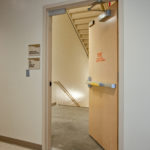



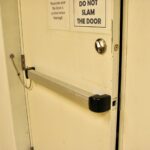
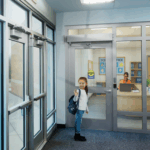

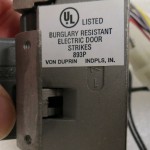
I like the 101 educational and day care check requirement. I wonder if states and cities, that have adopted 101 enforce it???
Which year edition of 101 was that added to?
I use to worry about exit doors that were hardly used or never used… Were they ever checked/ opened??? Especially when you see stuff growing around them, on the outside
Hi Charles –
I like requirement for the daily checks too, but I doubt that they are enforced in very many locations. Believe it or not, this requirement has been part of the code since 1929. Watch for a blog post about that! 🙂
– Lori
One of my typical recommendation for clients is to conduct a similar inspection with the emphysis on security at least once per year. During my tenure with a university, officers would conduct and document a phyiscal test on building perimeter doors. These “Door and WIndow Reports” (admittedly not very creative name) would be copied to the physical plant department returning to determine if/when the door was fixed. The form was later change to “Security Deficiency Report”…. a name which I would not use today. Note that this is not an “unlock” report which is more often a failure of people and not hardware.
Anyway, it would seem that the inspections you addressed in your post could easily incorporate a couple of addtional security tests.
I agree, Jim! I don’t think most people notice the doors they are walking through, so having required inspections could really help to ensure that everything is in working order.
– Lori
I had a moment when you stated panic hardware required at assembly/educational with 100+ occupants. IBC Chapter 10 has this as 50 occupants. I guess technically your article scope is pertaining to NFPA, but it seems misleading to suggest only when there are 100 occupants given the majority of states utilize IBC.
Sorry about that, Glen!
I definitely wasn’t trying to be misleading…the egress door requirement is only in NFPA 101 and not in the I-Codes, so the article was focused on NFPA 101 only. With that said, I added a note about the I-Codes to the article to avoid confusion. Thanks for the feedback!
– Lori
How do the I-Codes intend to address the egress door inspection issue?
Many of the Wordless Wednesday exit door examples are in retail, hospitality, religious, and other buildings under the I-Codes.
Is the ICC waiting for NFPA to develop a standard for egress doors, which the I-Codes can then reference similarly to NFPA 80?
Or maybe ICC could require signage (similar to mattress and pillow manufacturers’ labels) that states “DO NOT BLOCK EXIT DOOR UNDER PENALTY OF LAW” with smaller print stating “DO NO REMOVE OR OBSTRUCT VISIBLITY OF THIS SIGN UNDER PENALTY OF LAW”.
That is a fantastic question, Rex, and I don’t have an answer (yet). I have it on my code development wish list for the next editions of the I-Codes, which will be the 2030 editions. I think there is value to inspecting these doors – especially the ones with special locking arrangements. With that said, getting fire door inspections enforced has been an uphill climb.
For example, in Minnesota they removed the fire door inspection requirement from their adopted fire code, even though they had a high rise fire where the SFM’s report said that if the apartment fire door had been able to close, the people who died outside of the apartment could have survived. A fire door inspection would likely have identified the closing problem.
If such a straightforward example of the benefits of fire door inspections doesn’t result in enforcement of those inspection requirements, I don’t know what would have to happen to get egress door inspections enforced.
Here’s a post about Minnesota: https://idighardware.com/2021/03/fdai-heres-why/
– Lori